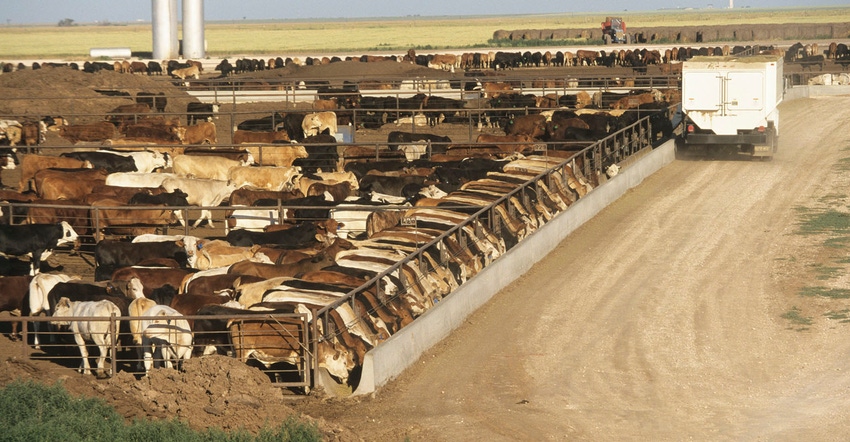Rationing tight supplies
Beef market expected to ration tight supply through sharply higher prices.
February 22, 2024

During times of tight supply of any commodity, it’s the function of prices, higher prices, to ration the supply. This will likely be the storyline in the beef and cattle market by the fourth quarter of 2024. Currently U.S. beef production is projected to decline 2.9% in 2024 compared to last year. In 2023, beef production was down 4.7% compared to 2022. Or another way to visualize what is happening, beef production in 2024 will be down 7.5% from two years ago. Production is expected to decline again in 2025, 2026 and likely again in 2027. Do you get the picture?
Expanding the discussion to the world level, as recently reported by Global AgriTrends, world grain fed beef production in 2024 will drop below production going back to the year 2000. During the 24-year period, GDP growth amounted to $48 trillion and the world population grew by nearly 2.0 billion. Do you get the picture? The cattle herd has been severely culled in the U.S. and recently in Australia. Evidence has also recently surfaced that Brazil may be actively culling their huge beef herd. Sources recently reported that fourth quarter cattle slaughter in Brazil surged by 22% over the fourth quarter of 2022.
Back to the U.S. market, on January 1, the supply of feeders outside of feed yards was measured record small. Yes, placements will be declining during most, if not all of 2024. The changing math of cattle-on-feed will start with the February on-feed report that is expected to show January placements down by 12% or more. A drop in placements of that magnitude changes the math rather quickly. On-feed inventory is expected to drop from 102% of last year to 100% over a thirty-day period. In addition, recent rains and forecasted rains in the Great Plains suggest plentiful grass will be available this spring and early summer. This will tend to reduce placements.
Recently, beef packers, in response to deeply unprofitable processing margins, have slowed the chain speed. This has two intended impacts. First, it allows them to break the cash steer market, and second, it allows them to ask higher prices for wholesale beef. Beef has indeed edged higher even in the face of sluggish beef demand typical of this time of year, the Lenten season. Packers have had some success in throttling the cash steer market, but not huge success. This strategy engineered by packers to restore margins will persist until spring beef demand develops. Springtime beef demand is the strongest demand of the entire year. When this demand hits the market, all bets are off. Packers will be forced to compete fiercely for animals or risk losing market share. When operating a beef plant with high overhead costs, losing market share is not something any packer wants to happen.
As demand rises and numbers fall, wholesale beef prices will soar higher. Cash steer prices will surge higher as well. As supplies tighten further, the function of the beef market will be to ration the tight supply through sharply higher prices. Frankly, we have no idea how high the price of choice beef and cash steer prices might move. One reliable source is projecting cash steer prices north of $210 by the fourth quarter with a spike during the fourth quarter as high as $252. Do you get the picture?
At this moment, before this all begins in earnest, smart cattle operations are working on ways to wrestle some control over replacement costs. Yes, the price of feeders will soar higher as well, no doubt reaching price levels never dreamed of. My partial solution is to establish call spreads in each feeder month, forming a ladder from $252 to $312. Each rung of the ladder is defined by a $10 call spread. For example, the first rung of the ladder could be established in the March feeder $252/$262 call spread. The second rung would be the April feeder $262/$272 call spread, and so on out through October. This strategy requires no margin capital. There’s no risk, other than the premiums paid. If feeder prices do not move sharply higher, you’ll have access to lower-than-expected feeders for replacement. If prices move sharply higher, as expected, profits from closing out the call spreads will partially make up for the high cost of replacement cattle. If you need help in executing this strategy, give us a call.
Dennis Smith publishes his widely followed evening livestock wire daily. For a free 30-day trial, please send an email to; [email protected]
About the Author(s)
You May Also Like




.png?width=300&auto=webp&quality=80&disable=upscale)
